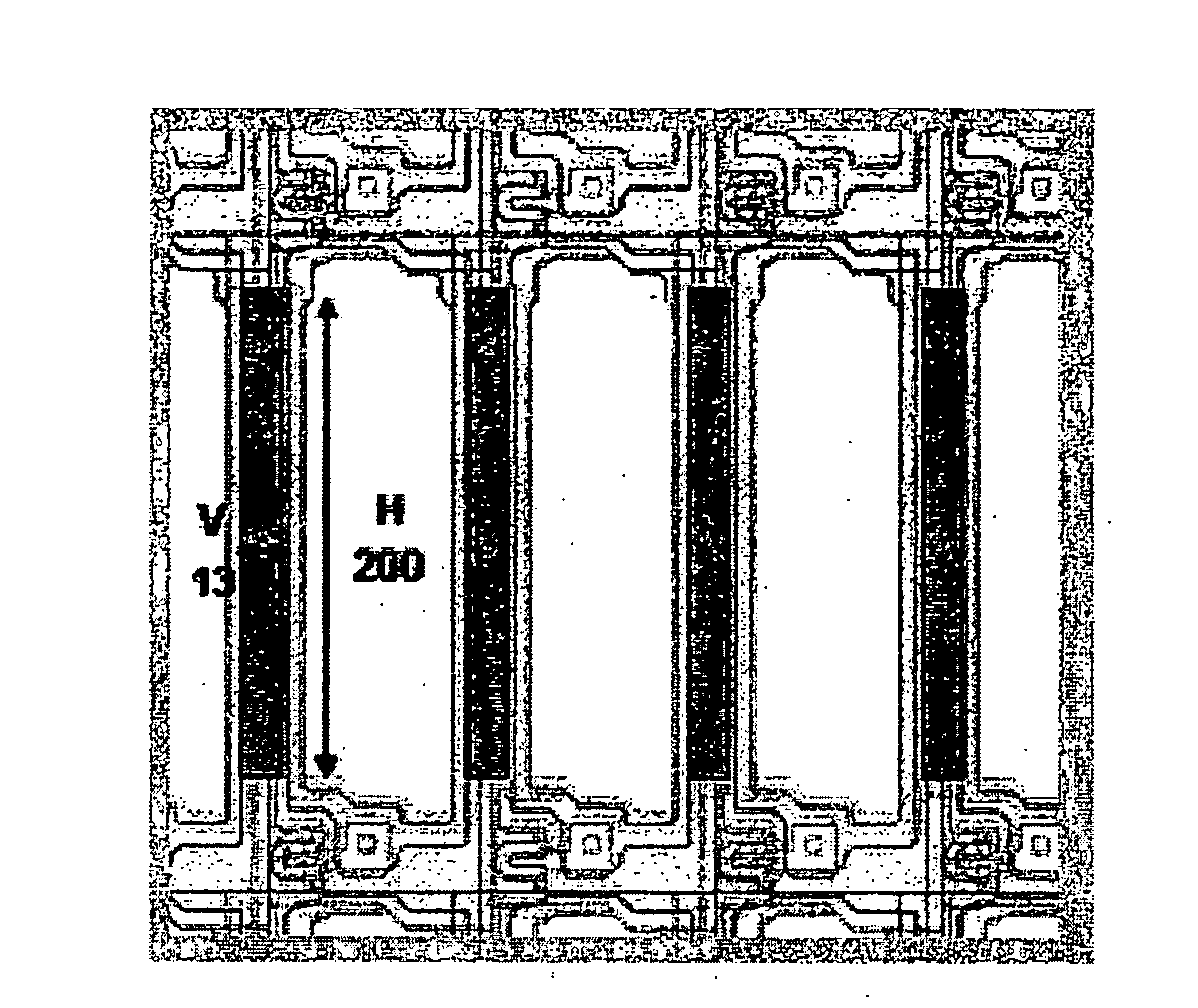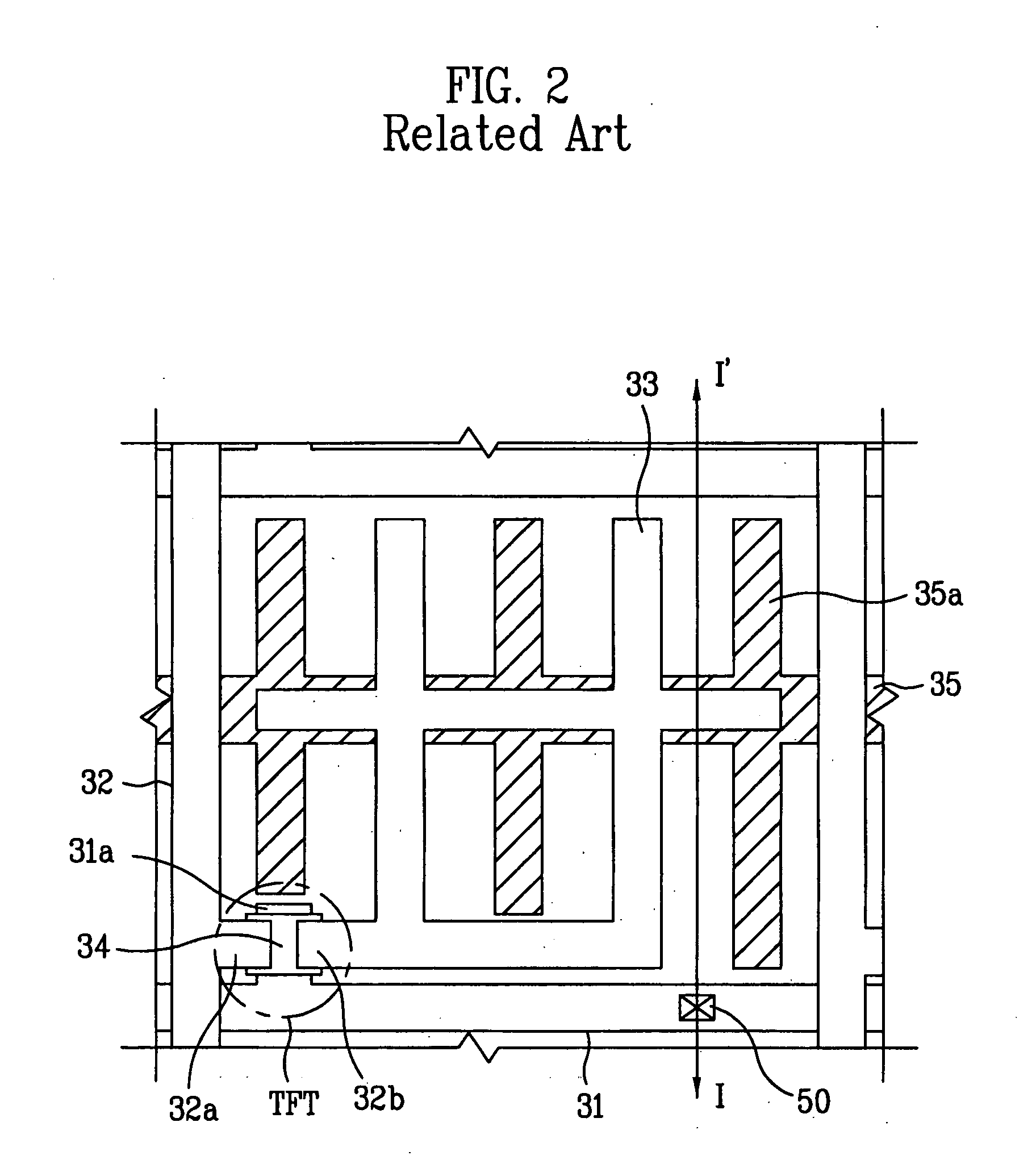Liquid crystal display device and method for fabricating the same
a technology of liquid crystal display and liquid crystal, which is applied in the direction of non-linear optics, instruments, optics, etc., can solve the problems of large process time and expense burden, inability to rapidly recover the substrate from a shifted state to an original state, and inability to observe luminous defects, etc., to achieve the effect of reducing the amount of liquid crystals filled
- Summary
- Abstract
- Description
- Claims
- Application Information
AI Technical Summary
Benefits of technology
Problems solved by technology
Method used
Image
Examples
Embodiment Construction
[0052]Reference will now be made in detail to the preferred embodiments of the present invention, examples of which are illustrated in the accompanying drawings. Wherever possible, the same reference numbers will be used throughout the drawings to refer to the same or like parts.
[0053]FIG. 4 is a plan view illustrating one pixel of an exemplary liquid crystal display (LCD) device according to the present invention, and column spacers and spacer patterns formed to correspond to the pixel. FIG. 5 is a cross-sectional view taken along lines II-II′, III-III′, and IV-IV′ of FIG. 4. As shown in FIGS. 4 and 5, each pixel of the LCD device according to the present invention includes R, G, and B sub-pixels. Each sub-pixel includes a gate line (“151” in FIG. 6) and a data line (“155a” in FIG. 6) intersecting each other. The gate line is shown extended in a horizontal direction. In each sub pixel, the data line is obtusely bent with respect to the gate line at a region, where the sub pixel is ...
PUM
| Property | Measurement | Unit |
|---|---|---|
| width | aaaaa | aaaaa |
| width | aaaaa | aaaaa |
| width | aaaaa | aaaaa |
Abstract
Description
Claims
Application Information
 Login to View More
Login to View More - R&D
- Intellectual Property
- Life Sciences
- Materials
- Tech Scout
- Unparalleled Data Quality
- Higher Quality Content
- 60% Fewer Hallucinations
Browse by: Latest US Patents, China's latest patents, Technical Efficacy Thesaurus, Application Domain, Technology Topic, Popular Technical Reports.
© 2025 PatSnap. All rights reserved.Legal|Privacy policy|Modern Slavery Act Transparency Statement|Sitemap|About US| Contact US: help@patsnap.com



